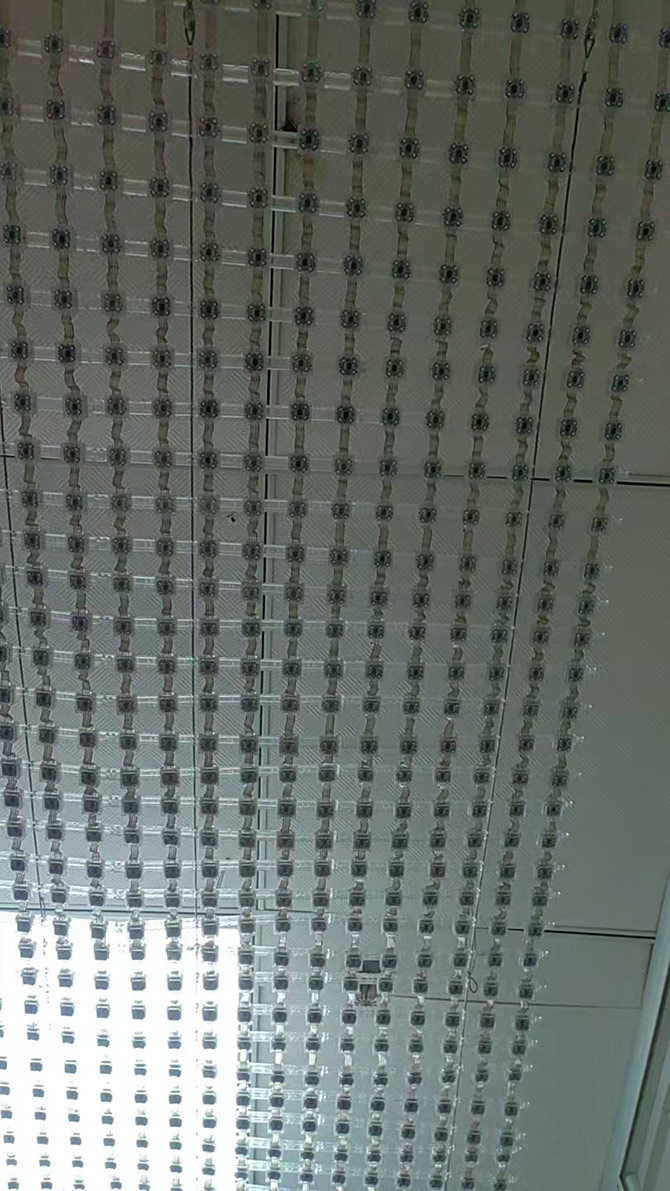LED mesh screens are generally in the shape of grids or strips. By installing LED light strips (or modules) on metal frames or steel structures, they are often used in scenes such as building curtain walls, rooftops, and outdoor advertising. Bendable, foldable, rulable, and hangable, freely combining into various shapes.
Unlike traditional LED displays that densely pack light-emitting diodes onto PCB boards, mesh screens sacrifice some resolution in exchange for lightweight construction and transparency. This enables effortless installation on glass curtain walls, windows, and irregular structures—scenarios where conventional displays cannot be applied—achieving seamless integration between architecture and media.
1.LED mesh screen’s model have P31.25, P41.7, P50, P62.5, P83.3, p100.
Their optimal viewing distance is over 40 meters, making them ideal for skyscraper curtain walls, large landmark buildings, and billboards viewed from a distance.
Recommendation: When budget and installation conditions permit, opt for products with smaller pixel pitches for a more refined display effect.
However, if the viewing distance is very far, choosing P50 may offer better value for money than P31.5.
2.Transmittance Selection Criteria:
For extremely high daylighting requirements: Select models with transmittance > 70%.
Balancing display performance and transparency: Select models with transmittance between 50% and 70%.
Note: The higher the transparency rate, the sparser the LED strip becomes, resulting in lower pixel density and reduced clarity.
3.Weight and Installation Location
Standard Range: Mesh screen weight typically ranges from 5-15 kg/㎡.
Selection Guidelines:
Always verify the load-bearing capacity of installation points with the construction team or property management.
For structures with limited load-bearing capacity, such as glass curtain walls or light steel roofs, ultra-lightweight products (< 8 kg/m²) must be selected.
Weight also relates to structural integrity—lighter isn’t always better, but ensure it remains within safe load-bearing limits.
4.Brightness selection
Indoor Use: 800–1,500 nits is enough . Brightness can even be reduced through dimming for greater energy efficiency and environmental sustainability.
Semi-Outdoor/Storefront Displays: 2,000–4,000 nits.
Outdoor Full-Color Displays: ≥5,000 nits to ensure vibrant color performance under intense sunlight.


